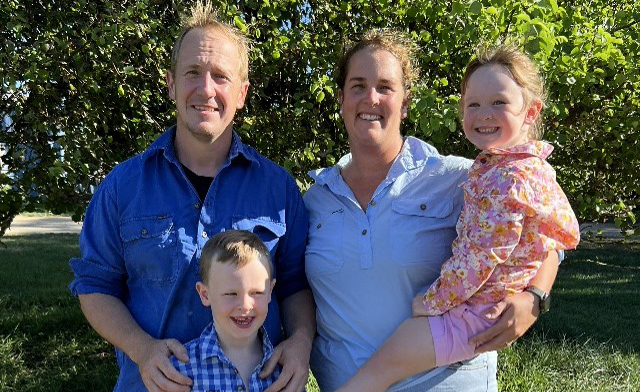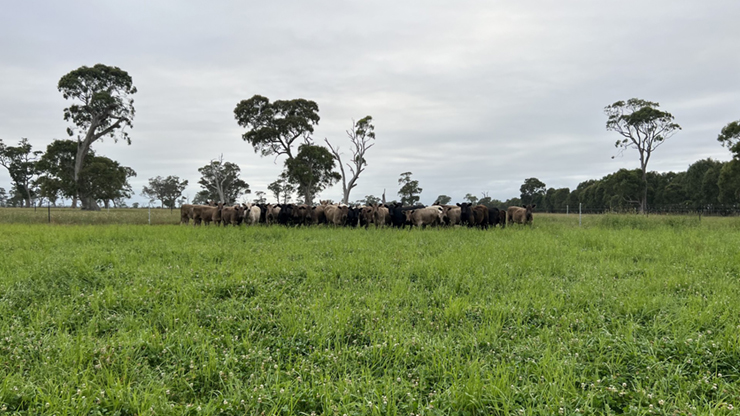 Lauren Schmidt and family
Lauren Schmidt and family
Reap rewards from perennial pastures
Lauren Schmidt and the Hayes family have followed a simple rotation for years – cropping paddocks before sowing them back to annual pastures for their livestock. With a goal to improve feed availability, experimenting with perennial pastures has yielded game-changing results.
To find the most persistent and productive perennial pastures for their Gippsland operation, Lauren joined the ‘Growing perennial pastures in a variable climate’ Producer Demonstration Site (PDS).
Following six years of cropping, the family sowed their first perennial crop – including a mix of phalaris, fescue, cocksfoot and clover – in April 2023, with their first grazing in August 2023.
“The impact is obvious – we’ve maintained 80% ground cover,” Lauren said.

The family have been reaping the rewards of the pasture mix.
Paddock preparation
Like all producers participating in the PDS, the trial paddock had been cropped the year prior to establishment to control weeds and improve soil fertility.
“The most important factor of a new pasture is ensuring you have the right environment for it to grow in,” Lauren said.
“We did soil testing, and because the paddock was cropped previously, we’ve been keeping up with fertiliser levels.
“These things can be a big outlay, but you should see the returns tenfold. We’re hoping this pasture will be in the ground for around 20 years,” she said.
Following preparation, a local agronomist helped to advise on a seed mix suitable to their soil type and feed demand.
Going for growth
In the first year, the results were clear on the ground and in their livestock.
“We definitely see the increase in performance of our new pasture compared to the older pastures,” Lauren said.
Alongside the pasture mix, the change has also required adaptation in management styles.
“Historically our pastures were managed with the traditional set stocking, but this PDS trial has held us accountable to adequate rest periods.
“We’re recording the condition of the pasture before stock go in and when they come out, and also what condition those cattle are in. We petition what species they’re preferentially eating, and if we’re noticing any changes in the paddock.”
The pasture has increased feed availability, and with it, the ability to increase stocking rate.
Perfecting the pastures
Following a successful first year, Lauren intends to continue pasture improvements with mixed perennial pastures.
“We’ve planted another paddock this year adding chicory and the sheep seem to like having that broad leaf in there, which is something we hadn’t done before.
“Having that deep rooted plant also helps with the soil structure,” she said.
The pastures included in the mix will continue to change, as the family perfects what is required from their property.
“The fescue (40% of the current pasture mix) is fine when it’s short, but in a good season it will be the last thing the sheep eat. We’ll probably halve the amount of fescue and will be trialling adding in more clovers.
“Going forward, our grazing management will inform the pasture mix. For us, feed availability for our autumn lambing is what we’re working towards.”



